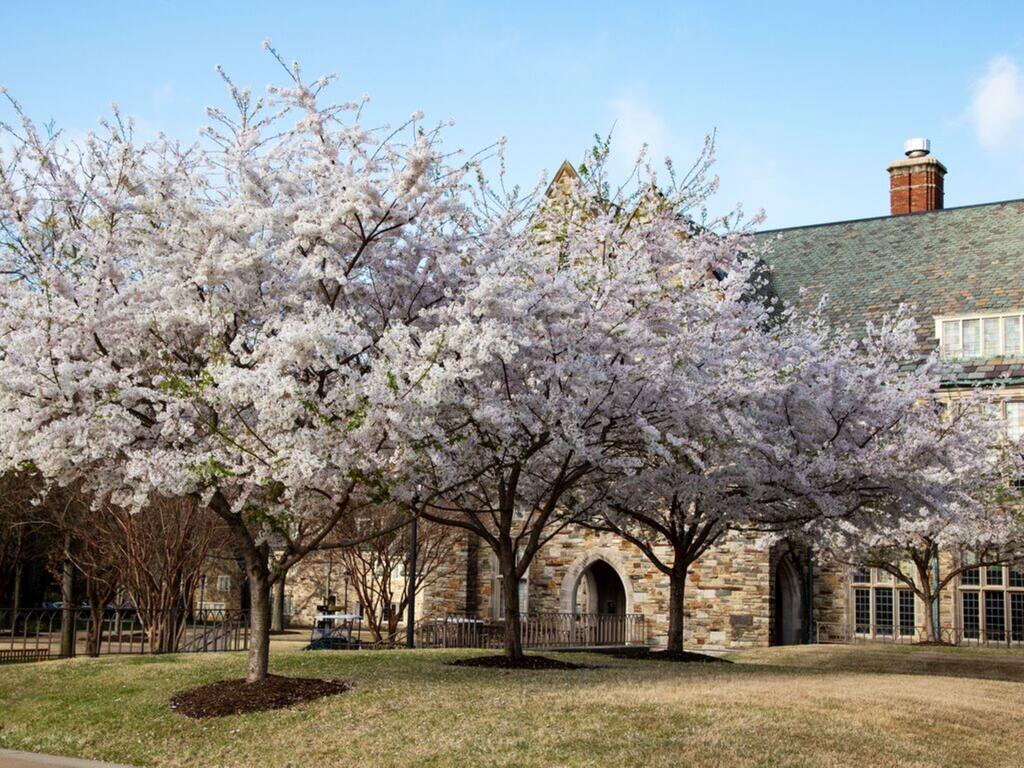A scenic college campus can enrich the learning environment and inspire well-being. Rhodes College has received notable designations and rankings over the years for its Collegiate Gothic architecture and magnificent grounds, and with about 120 tree species and more than 1,500 individual trees, it is certified as a Level IV Arboretum, the highest designation granted by the Tennessee Urban Forestry Council.
ROOTS Gardening Club, a student organization at Rhodes, is continuing the college’s commitment to that legacy with the addition of two more tree species, both fruit-bearing.
On Feb. 22 at 1 p.m., the group will plant three pawpaw trees by the East Village C parking lot, right on the fence line of North Parkway and two persimmon trees in the ROOTS’ North Garden (along the campus’ north border), directly behind the Fargason Athletic Fields and to the left of Stauffer Field (baseball). The campus community is invited to the tree planting.
“The trees were sourced from Memphis Native Tree Works through a Turley Scholars Fellowship project,” said Anna Tilley ’25, president of ROOTS and Rhodes Student Associate for the Lynne and Henry Turley Memphis Center for Community Engagement. “All five trees are native, which are critical for pollinators to thrive.”
The Rollow Avenue of Oaks was planted by John Rollow in 1924 using seedlings collected from the college’s original campus in Clarksville, TN. The Rhodes Arboretum originated in the early 1950s under the supervision of Dr. Arlo Smith, a longtime professor of biology, and has included the Southern magnolia, willow oak, American elm, red maple, flowering dogwood, tulip poplar, crape myrtle, Kentucky coffee tree, shagbark hickory, black walnut, ginkgo, Japanese maple, and dawn redwood, just to name a few.
Rhodes faculty, staff, and students have been involved over the decades to conserve and increase tree species on campus, to showcase the arboretum’s cultural and ecological significance, and to ensure its arboretum status by labeling trees, on the trunk or on nearby stake, with their common and scientific names. They also have produced an accompanying brochure for a self-guided tour. In addition, elementary school students visit the campus to collect and identify leaves for scientific study.
The addition of new trees on campus by ROOTS is just one of many ways the students are environmental stewards on and off campus. “Last fall, we landscaped the Frazier Jelke garden with 91 edible native plant species, also sourced from Memphis Native Tree Works,” said Tilley, who is pursuing a major in urban studies and a minor in environmental studies. “In 2021, we started an on-campus composting program in alignment with the 2020 Rhodes Sustainability Plan. As of January 2025, 14,000 gallons of kitchen food scraps have been redirected. These scraps will come back to campus as nutrient-rich compost for the new trees to grow strong. Additionally, we are strong partners with the V&E Greenline.”
View a map of the Rhodes Arboretum.
